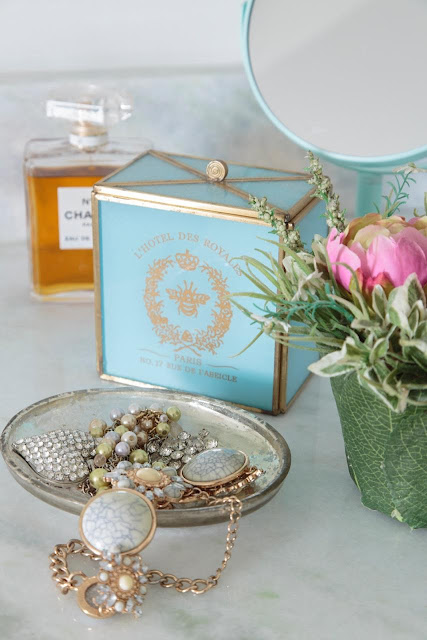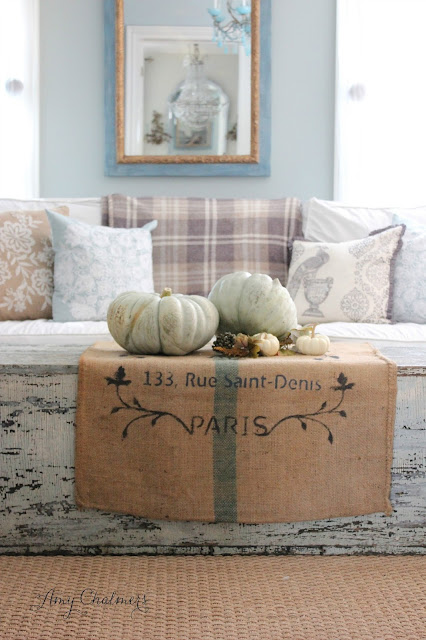This is the second part to my Easy Upholstery post for the French Chair.
As I had never upholstered before, I went about it in a different fashion,
and as usual, I try to figure out the easiest and fastest way to get a great result.
The chair looks like it came from a furniture store, when in reality it came from
an antique shop, and it was just an ugly fabric.
When I left off, I had not finished this back panel of the chair, nor had I applied the "gimp" trim,
which is a flat braid that is used to cover up raw edges and staples. I have had quite a few emails
inquiring was I ever going to finish the chair and post about it? Well I did finish it, but never got
around to posting....so here is how I did it, in the easiest way possible, of course!
Measure roughly how much area you need to cover with the gimp and then go to
a fabric shop or craft shop and select the color and style of flat braid (gimp) you think
looks best. I picked out an off white color, but I likely would have gone for a bit darker,
but this was all they had. This is simply applied by using a hot glue gun. Fold over one edge
of the gimp and glue it to itself to create a finished edge on the gimp. Then simply glue
along the edge of the staples and press the gimp into position. Finish the same way,
by turning under the last part of the gimp and glueing down to hide the raw edge.
For reference, this is the fabric as it is stapled onto the edge of the frame,
and then trimmed back very closely. These areas need to be covered with gimp.
I also applied the gimp around the small upholstered arm rests,
and anywhere you could see where you had stapled the fabric to the chair frame.
For the back, there was NO place to apply staples,
as the back panel is usually done first by the upholsterer. But we are covering
existing upholstery...so its going to be a different approach.
( The back panel area is just a covering of fabric stretched across for a decorative purpose.
No one sits on it, so there is no support under the backs.)
I came up with a clever way to go about it, and easy too.
A green burlap fabric was chosen for the back (you can use the same fabric as the rest of the chair, but I wanted to have something more interesting). I used some pins to place the burlap over the back and hold it in position. Then I cut the burlap to be about 1" - 2" bigger than the back area I needed to cover. I don't have photos to show this, because I can't find them...but its super easy. Cut out your back fabric to be a little bit bigger than the area you will cover.
Now you have your fabric ready to be attached....but how?
Using spray adhesive (any brand from a craft store will do),
I sprayed the back of the chair right over the existing old fabric.
Then I smoothed on the burlap over the old fabric using my hands,
leaving an inch or two excess around the edges.
Next, you have to push the excess fabric under the wood frame.
You may have to trim the excess fabric to less than an inch, depending
upon how much you can push it under the frame.
To push it under the frame I used a metal spatula.
Simply shove the fabric under the frame using the spatula to guide it under the wood frame.
Remember, you will trim around the edges with decorative trim or more gimp.
It was quick and easy and painless!
I used a fancy trim for the back to add extra interest,
but you could certainly just use more gimp.
In fact you wouldn't need to add anything, because
the raw edges are hidden under the frame, but it looked unfinished to me.
Use your hot glue gun to apply the trim around the back.
Start in a random side spot so when your starting and
ending edges meet, its not in a super obvious place.
These chairs look good from the back as well as the front,
so that is why its fun to use a complementary fabric for the backing.
And that is how I upholstered this 1970s French Chair into something I love.





















































